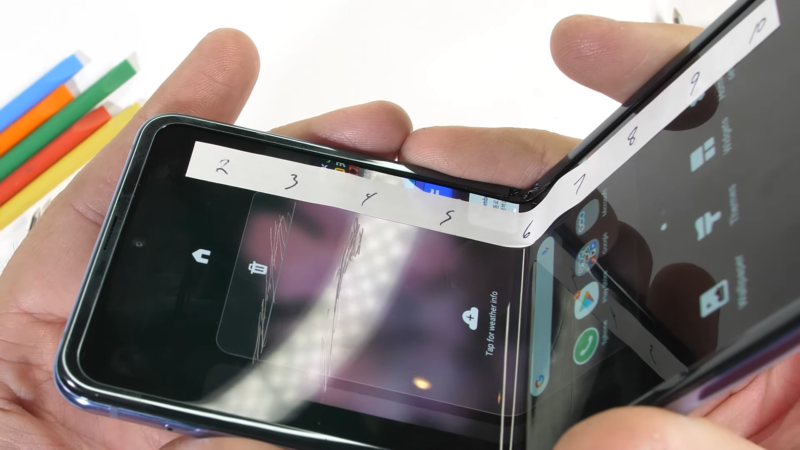Samsung’s “Ultra Thin Glass” doesn’t seem much stronger than plastic

Enlarge / The Galaxy Z Flip's "glass" isn't any more scratch-resistant than plastic. (credit: JerryRigEverything)
There comes a point in the life of every foldable smartphone when, after a wave of hype and highly controlled early looks, the phone actually hits the hands of the general public-and durability issues immediately pop up. We've seen it with the Galaxy Fold, which died in the hands of reviewers and was delayed for six months; the Huawei Mate X, which had its launch limited to China and broke after a single drop; and the Moto Razr, which has a creaky hinge that jams easily and a display that delaminates. This weekend it was the Samsung Galaxy Z Flip's turn to disappoint us. The initial shipments are going out, and we're already seeing that Samsung's much-hyped flexible glass cover isn't much more durable than plastic.
YouTuber JerryRigEverything regularly does destructive durability tests on phones, partly by attacking a device with a set of Mohs picks. These pointy metal tools that are calibrated to the Mohs scale of mineral hardness allow a user to determine the hardness of a surface by doing a scratch test. You start with the softest pick and work your way up the set until you find something that can scratch the surface you're testing. A modern smartphone with Corning's Gorilla Glass scratches at level 6 on the Mohs hardness scale.
The Galaxy Z Flip features a first-of-its-kind flexible glass cover that Samsung calls "Ultra-Thin Glass." Until now, foldables have had to suffer through life with plastic display covers, which scratch easily, don't provide much protection, and just like a resistive touchscreen, feel bad to swipe around on, thanks to the squishy pliability of the display. With this new invention of flexible glass, the Z Flip promised a return to a hard, smooth, scratch-resistant display surface.
Read 5 remaining paragraphs | Comments